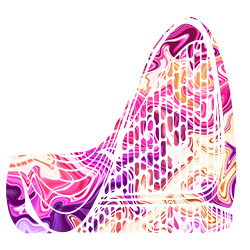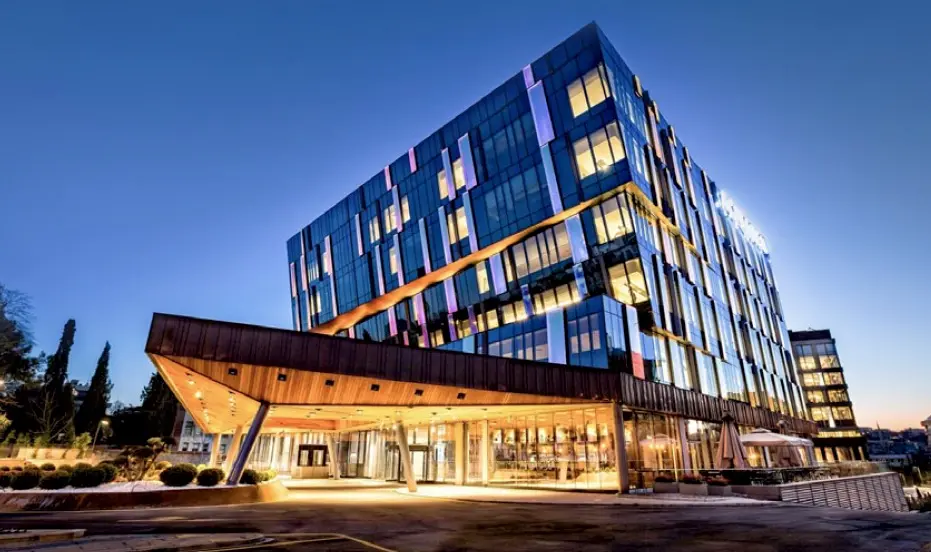Complications of dwarfism-related disorders can vary greatly, but some complications are common to a number of conditions.
Disproportionate dwarfism
The characteristic features of the skull, spine and limbs shared by most forms of disproportionate dwarfism result in some common problems:
- Delays in motor skills development, such as sitting up, crawling and walking
- Frequent ear infections and risk of hearing loss
- Bowing of the legs
- Difficulty breathing during sleep (sleep apnea)
- Pressure on the spinal cord at the base of the skull
- Excess fluid around the brain (hydrocephalus)
- Crowded teeth
- Progressive severe hunching or swaying of the back with back pain or problems breathing
- Narrowing of the channel in the lower spine (spinal stenosis), resulting in pressure on the spinal cord and subsequent pain or numbness in the legs
- Arthritis
- Weight gain that can further complicate problems with joints and the spine and place pressure on nerves
Proportionate dwarfism
With proportionate dwarfism, problems in growth and development often result in complications with poorly developed organs. For example, heart problems that often occur with Turner syndrome can have a significant effect on health. An absence of sexual maturation associated with growth hormone deficiency or Turner syndrome affects both physical development and social functioning.
Many different medical conditions cause dwarfism. In general, the disorders are divided into two broad categories:
- Disproportionate dwarfism. If body size is disproportionate, some parts of the body are small, and others are of average size or above-average size. Disorders causing disproportionate dwarfism inhibit the development of bones.
- Proportionate dwarfism. A body is proportionately small if all parts of the body are small to the same degree and appear to be proportioned like a body of average stature. Medical conditions present at birth or appearing in early childhood limit overall growth and development.
Most dwarfism-related conditions are genetic disorders, but the causes of some disorders are unknown. Most occurrences of dwarfism result from a random genetic mutation in either the father’s sperm or the mother’s egg rather than from either parent’s complete genetic makeup.
Achondroplasia
About 80 percent of people with achondroplasia are born to parents of average height. A person with achondroplasia and with two average-size parents received one mutated copy of the gene associated with the disorder and one normal copy of the gene. A person with the disorder may pass along either a mutated or normal copy to his or her own children.
Turner syndrome
Turner syndrome, a condition that affects only girls and women, results when a sex chromosome (the X chromosome) is missing or partially missing. A female inherits an X chromosome from each parent. A girl with Turner syndrome has only one fully functioning copy of the female sex chromosome rather than two.
Growth hormone deficiency
The cause of growth hormone deficiency can sometimes be traced to a genetic mutation or injury, but for most people with the disorder, no cause can be identified.
Other causes
Other causes of dwarfism include other genetic disorders, deficiencies in other hormones or poor nutrition. Sometimes the cause is unknown.
Signs and symptoms — other than short stature — vary considerably across the spectrum of disorders.
Disproportionate dwarfism
Most people with dwarfism have disorders that cause disproportionately short stature. Usually, this means that a person has an average-size trunk and very short limbs, but some people may have a very short trunk and shortened (but disproportionately large) limbs. In these disorders, the head is disproportionately large compared with the body.
Almost all people with disproportionate dwarfism have normal intellectual capacities. Rare exceptions are usually the result of a secondary factor, such as excess fluid around the brain (hydrocephalus).
The most common cause of dwarfism is a disorder called achondroplasia, which causes disproportionately short stature. This disorder usually results in the following:
- An average-size trunk
- Short arms and legs, with particularly short upper arms and upper legs
- Short fingers, often with a wide separation between the middle and ring fingers
- Limited mobility at the elbows
- A disproportionately large head, with a prominent forehead and a flattened bridge of the nose
- Progressive development of bowed legs
- Progressive development of swayed lower back
- An adult height around 4 feet (122 cm)
Another cause of disproportionate dwarfism is a rare disorder called spondyloepiphyseal dysplasia congenita (SEDC). Signs may include:
- A very short trunk
- A short neck
- Shortened arms and legs
- Average-size hands and feet
- Broad, rounded chest
- Slightly flattened cheekbones
- Opening in the roof of the mouth (cleft palate)
- Hip deformities that result in thighbones turning inward
- A foot that’s twisted or out of shape
- Instability of the neck bones
- Progressive hunching curvature of the upper spine
- Progressive development of swayed lower back
- Vision and hearing problems
- Arthritis and problems with joint movement
- Adult height ranging from 3 feet (91 cm) to just over 4 feet (122 cm)
Proportionate dwarfism
Proportionate dwarfism results from medical conditions present at birth or appearing in early childhood that limit overall growth and development. So the head, trunk and limbs are all small, but they’re proportionate to each other. Because these disorders affect overall growth, many of them result in poor development of one or more body systems.
Growth hormone deficiency is a relatively common cause of proportionate dwarfism. It occurs when the pituitary gland fails to produce an adequate supply of growth hormone, which is essential for normal childhood growth. Signs include:
- Height below the third percentile on standard pediatric growth charts
- Growth rate slower than expected for age
- Delayed or no sexual development during the teen years
Your pediatrician will likely examine a number of factors to assess your child’s growth and determine whether he or she has a dwarfism-related disorder. In some cases, disproportionate dwarfism may be suspected during a prenatal ultrasound if very short limbs disproportionate to the trunk are noted.
Diagnostic tests may include:
- Measurements. A regular part of a well-baby medical exam is the measurement of height, weight and head circumference. At each visit, your pediatrician will plot these measurements on a chart to show your child’s current percentile ranking for each one. This is important for identifying abnormal growth, such as delayed growth or a disproportionately large head. If any trends in these charts are a concern, your pediatrician may make more-frequent measurements.
- Appearance. Many distinct facial and skeletal features are associated with each of several dwarfism disorders. Your child’s appearance also may help your pediatrician to make a diagnosis.
- Imaging technology. Your doctor may order imaging studies, such as X-rays, because certain abnormalities of the skull and skeleton can indicate which disorder your child may have. Various imaging devices may also reveal delayed maturation of bones, as is the case in growth hormone deficiency. A magnetic resonance imaging (MRI) scan may reveal abnormalities of the pituitary gland or hypothalamus, both of which play a role in hormone function.
- Genetic tests. Genetic tests are available for many of the known causal genes of dwarfism-related disorders, but these tests often aren’t necessary to make an accurate diagnosis. Your doctor is likely to suggest a test only to distinguish among possible diagnoses when other evidence is unclear or as a part of further family planning. If your pediatrician believes your daughter may have Turner syndrome, then a special lab test may be done that assesses the X chromosomes extracted from blood cells.
- Family history. Your pediatrician may take a history of stature in siblings, parents, grandparents or other relatives to help determine whether the average range of height in your family includes short stature.
- Hormone tests. Your doctor may order tests that assess levels of growth hormone or other hormones that are critical for childhood growth and development.




















